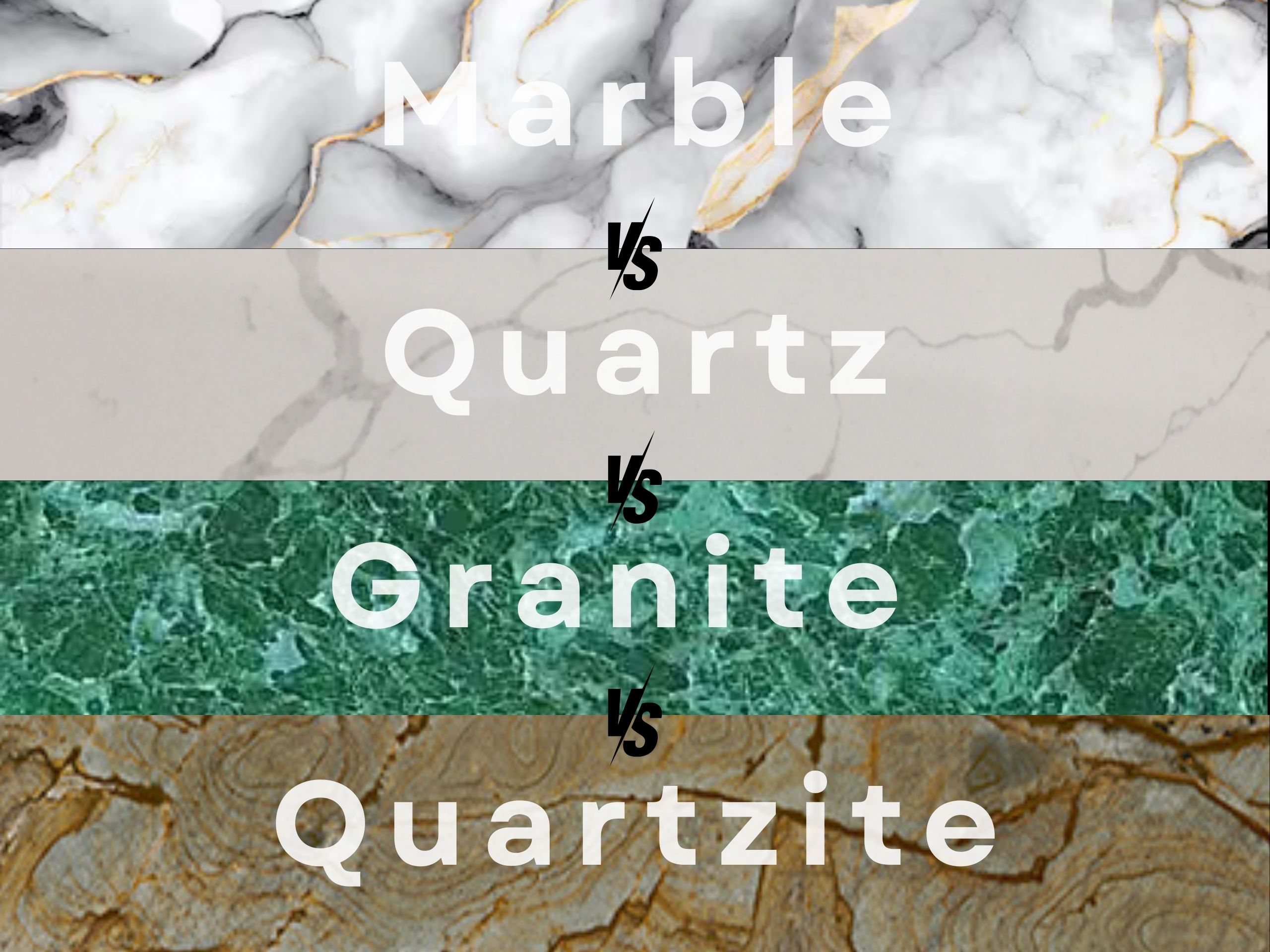How to Tell The Difference Between Marble, Granite, Quartz and Quartzite

Embarking on a kitchen or bathroom remodeling project is an exciting yet challenging endeavor, especially when faced with a multitude of choices for countertops, floors, and other surfaces. The decision-making process can be overwhelming, but understanding the characteristics of different stones and their suitability for specific areas of your home will help guide your choices. Let’s delve into the considerations for countertop materials, as they often play a central role in both kitchens and bathrooms.
Choosing between marble, granite, and quartz for your countertops involves considering factors such as aesthetics, durability, maintenance, and budget. Here’s a breakdown of the differences to help you make an informed decision:
Marble:
Marble is one of the most elegant natural stones in the world. For centuries, it has been used to construct palaces fit for kings and statues dedicated to gods. If marble stone is free from all impurities, it will be solid white. Most marble, however, contains other minerals that can make it bluish, gray, pink, yellow, or black. However, these colors won’t be stark.
The reason marble is so popular with artists and architects alike is that it is relatively soft and easy to cut and carve.
Marble is truly a timeless classic when it comes to building materials. This is evidenced by the fact that the natural stone has been used to build everything from some of the world’s most famous statues to kitchen and bathroom countertops. While there are a plethora of countertop materials that are beautiful, many homeowners simply feel that there is no material as beautiful as marble. With numerous colors and styles available, many of which include elegant veining, it is surely hard to match the beauty of marble countertops.
While much of marble’s appeal lies in its appearance, the material is also relatively durable. However, you must keep up on maintenance if you want to keep your marble countertops in good shape.
Granite:
Another natural stone that’s popular for countertops, Granite, has also been used for thousands of years in buildings, bridges, and monuments. Mount Rushmore, the famous sculpture of U.S. Presidents George Washington, Thomas Jefferson, Theodore Roosevelt, and Abraham Lincoln, is sculpted in a granite outcrop in the hills of South Dakota. Because it contains an assortment of different minerals like feldspar, quartz, and mica, granite can come in many colors, but the most common ones are whites, grays, reds, and browns.
Granite is a phaneritic rock, meaning it contains crystals and clumps of minerals large enough to distinguish with the naked eye. When you look at a slab of granite, you see various pieces in a speckled pattern that come together to form the stone.
Granite countertops are some of the most beautiful and tough surfaces you can find. You will have a seemingly endless array of colors and styles to choose from when it comes to this amazing natural stone. Granite is very durable, which makes it an ideal countertop material for any home.
Quartz:
Quartz is a mineral, while marble and granite are rocks. A mineral is a crystalline object that has the same chemical makeup in all its parts. In quartz’ case, it is made of silicon dioxide. It is the most abundant mineral in the Earth’s crust.
Pure quartz is clear, but impurities lend this mineral a nearly endless variety of colors. The highest quality quartz is used in sculpture or even in jewelry.
Quartz is the main ingredient in the engineered stone use to make countertops and backsplashes. Powdered quartz is mixed with a resin and then formed into slabs.
Quartz countertops are engineered surfaces that are made from a combination of roughly 90 percent ground natural quartz and about 10 percent polyresin. These specific percentages can slightly differ based on brands but will always be in the same area.
Although quartz countertops are engineered, the surfaces are incredibly attractive. Due to the fact that they are manufactured, quartz countertops have many different styles, including those that replicate natural stones like granite and marble. Another benefit that results from these surfaces being engineered is that they are non-porous, which separates them from both granite and marble. This means that quartz countertops do not require the sealing that granite and marble countertops do.
Quartzite:
Quartzite, a rock transformed from sandstone under intense heat and pressure, often fools the eye with its veins and colors, resembling granite or even marble.
Robust and heat-resistant, quartzite stands among the toughest materials, enduring years of frequent use. With proper sealing and care, quartzite counters can strongly repel moisture. While a re-application of sealant is needed every few years, once properly sealed, cleaning quartzite is a breeze. If you desire a durable surface with a marble-like appearance, quartzite countertops are the perfect choice.
The durable nature of quartzite, akin to granite, makes it a dependable option for those who seek both aesthetics and functionality in their countertops. Whether in a bustling kitchen or a stylish bathroom, quartzite stands the test of time, embodying both strength and elegance.






Comments